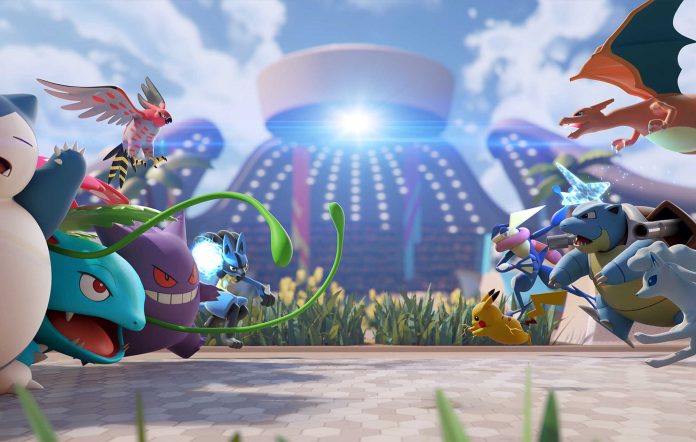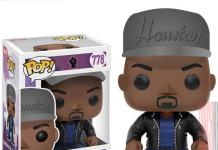This article was originally written for Inclusive Gamers, our sister site.
Pokémon Introduction
Pokémon is a series of video games developed by Game Freak and published by Nintendo and The Pokémon Company under the Pokémon media franchise. Created by Satoshi Tajiri with assistance from Ken Sugimori, the first games, Pocket Monsters Red and Green, released in 1996 in Japan for the Game Boy handheld console.
Pokémon is the world’s largest media franchise, with successful anime series, movies, and merchandise, with spin-off game Pokémon Go having crossed 1 billion mobile game downloads worldwide. By November 24, 2017, more than 300 million Pokémon games had been sold worldwide on handheld and home consoles, across 76 titles, including spin-offs. As of March 2021, the series has sold over 380 million units worldwide. This makes Pokémon the fourth best-selling video game franchise, behind Nintendo’s own Mario franchise, Tetris and Call of Duty.
About the ESRB
The Entertainment Software Rating Board is a self-regulatory organization that assigns age and content ratings to consumer video games in the United States and Canada.
“Our primary mission is to help parents make informed decisions about the video games and apps their children play. Our Advertising Review Council actively enforces industry-adopted advertising guidelines, and our Privacy Certified program helps ensure responsible web and mobile privacy practices.”
Pokemon video game ESRB and TV Rating Summary
“This is a role-playing game in which players assume the role of a Pokémon trainer trying to become champion. Players explore the fictional region and engage in turn-based combat with other trainers. Players select various attacks (e.g., fire, lightning/electricity) from a menu to defeat Pokémon. Melee-style attacks (e.g., rolling, scratching, bouncing) are also used, as impact sounds, light effects, and diminishing health bars indicate damage. One creature is seen with a large drop of mucous [sic] hanging from its nose.
The Pokémon tv series is rated TV-Y7 Programming rated TV-Y7 in the United States TV Parental Guidelines signifies content is suitable for children 7 or older. Many of these programs contain some fantasy violence.” – ESRB
Other notable shows that got this rating are SpongeBob SquarePants, The Loud House, and Foster’s Home for Imaginary Friends.
All cute little shows that exist without hidden messages of violence and other issues.
Spongebob is a good example of positive inclusivity in childhood media. Spongebob is a gay icon sporting his flamboyant nature, sensitive disposition, and closeness with his best friend Patrick.
Pokemon is Not Cutesy
As my young nephew attempted to explain the new game his parents just bought him, he described these cute cartoonish fictional animals depicting common wild animals found in reality- dogs, cats, birds, mice, etc. Shortly later, I was left in abhorrence as he very vividly described fighting against their will to win money and power. Only certain people in this world are “pokemon trainers”, most people just have normal jobs. Why couldn’t the series be about how noble journalism is?
In addition to forcing these cute animals to fight, the series actually makes you capture additional wild Pokemon in order to progress because in classic video game tropes- some types are stronger than others. As explained to me, “fire type is weak to water, water is weak to grass, grass is weak to fire.” As he continued to explain this wretched game, he described one of these pokemon named “Jynx” as basically a cartoonish opera singer, but it’s in blackface and appears to be a trans individual.
To capture these wild animals, you must first fight them to make them much “weaker” (inflict pain) by making your Pokemon fight them. Biting, clawing, poisoning, and flamethrowing are some examples of how these pokemon hurt each other. Once the wild animal is severely injured, the “Trainer” throws a “pokeball” at it to capture it, similar to a fantasy net-system. The success rate of capture is determined by how injured the other animal is. As soon as they are captured by these small unexplainable “Pokeballs” they are fully under your control. They will live and learn exactly as you tell them, and won’t leave unless you tell them to.
Stockholm syndrome is an emotional response. It happens to some abuse and hostage victims when they have positive feelings toward an abuser or captor.
There are four key components to Stockholm Syndrome:
1) The victim experienced direct threats of physical or emotional violence
2) They are isolated from their peers or restrained
3) They have an opportunity to escape, but fail to take it
4) They show sympathy for their captors
The Pokémon series is wholly hidden messages of dog-fighting and Stockholm Syndrome and it is absolutely sickening.
Speaking of sickening, there are two Pokémon, alterations of each other called “Koffing” and “Weezing” which appear to be a direct mockery of the coronavirus pandemic that so many alt-right individuals deny and mock so often.
Pokemon Unite
The Nintendo company decided to make a version of a popular game genre called MOBA (Multiplayer Online Battle Arena), similar popular games are League of Legends, Smite, Defense of the Ancients 2, and Heroes of the Storm, all known to have incredibly toxic communities due to the competitive nature of fragile white men, often already lead astray- down a path of white nationalism by these gaming communities. Nintendo named their version of this MOBA genre “Pokémon Unite”. It seems a little too coincidental that one of the popular slogans from the Jan. 6th insurrection is “Unite the Right”. Pokémon is clearly brainwashing kids and turning them towards hatred.
Do you think it was coincidental? Leave a comment below.














